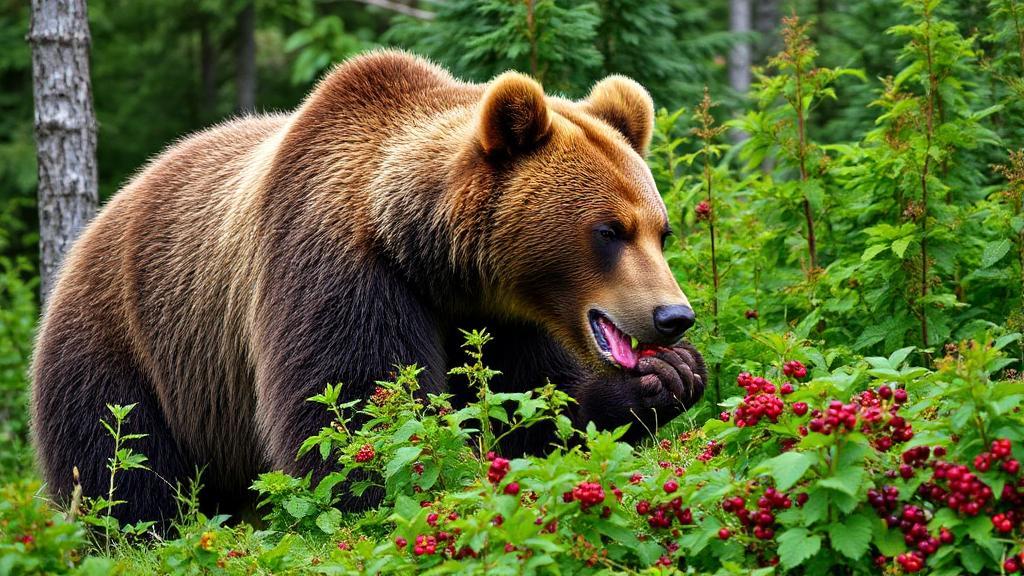Introduction
Grizzly bears (Ursus arctos horribilis) are one of the most iconic wildlife species in North America. These majestic creatures, known for their muscular build and distinctive silver-tipped fur, are found primarily in the western regions of Canada and the United States. Understanding their diverse diet is crucial for conservation efforts and ensuring their habitats are preserved.
Seasonal Diet Variations
Spring
As grizzly bears emerge from hibernation, they search for high-protein foods to replenish their energy reserves. Their spring diet includes:
- Winter-killed animals and carrion
- Early spring vegetation like sedges and grasses
- Roots and tubers
- Small mammals emerging from their winter dens
- Young ungulates (elk, deer, and moose calves)
Summer
Summer brings a bounty of food options:
- Berries (blueberries, huckleberries, serviceberries, and salmonberries)
- Insects, particularly army cutworm moths
- Fish, especially during salmon runs
- Small mammals like ground squirrels and marmots
Fall
During fall, bears enter hyperphagia, eating excessively to build fat reserves for winter:
- Pine nuts and whitebark pine seeds
- Late-season berries
- Large mammals (both predated and scavenged)
- Fish (continuing salmon runs)
- Fruits like apples
- Acorns and beechnuts
Protein Sources
Hunting
Grizzlies are skilled hunters, targeting:
- Elk calves
- Deer
- Moose
- Mountain goats
- Small mammals
Fishing
Bears demonstrate remarkable fishing techniques, especially during salmon runs. According to research from the National Park Service, a single bear can catch and eat several hundred pounds of fish during peak salmon runs.
Plant Matter
"Despite their fearsome reputation, grizzly bears typically obtain about 80-90% of their diet from plant sources."
- North American Bear Center
Regional Variations
Diet varies significantly by habitat:
| Region | Primary Food Sources |
|---|---|
| Coastal | Salmon, sedges, berries |
| Interior | Roots, small mammals, berries |
| Mountain | Pine nuts, army cutworm moths, ungulates |
| Prairie | Roots, ground squirrels, berries |
Human Impact and Conservation
Human activities affect natural feeding patterns through:
- Habitat fragmentation
- Climate change effects on food sources
- Competition for resources
- Access to human food and garbage
Conservation Strategies
- Protected Areas: Establishing and maintaining protected areas for undisturbed foraging
- Wildlife Corridors: Creating connections between fragmented habitats
- Public Education: Educating people about coexisting with bears
For more information on grizzly bear conservation, visit the National Park Service or the World Wildlife Fund.
To maintain healthy bear populations, wildlife managers emphasize the importance of protecting diverse food sources and maintaining natural feeding patterns. This includes preserving critical habitat areas and managing human-bear conflicts through proper food storage in bear country.
